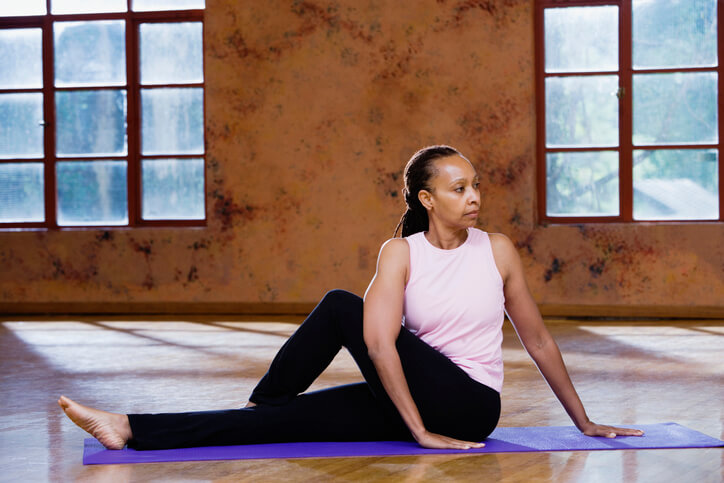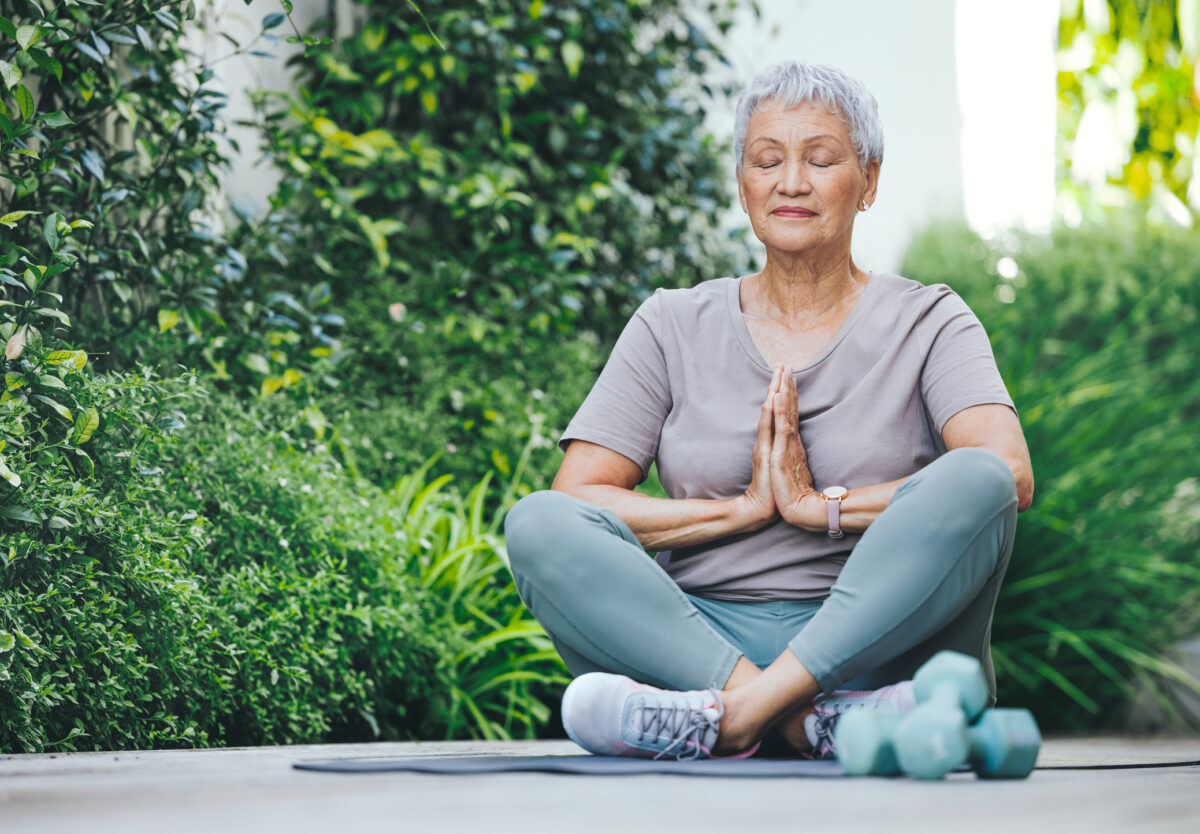For a multitude of reasons, many Americans look forward to saying goodbye to the year each December 31st. Regardless of what this year brought, from the good, the bad, and everything in between, you can still start the new year right with a fresh set of mental wellness habits to keep you focused and positive.
Why is mental wellness so important? For starters, paying attention to your mental health and maintaining a positive outlook can lead to more fulfilling relationships. After all, when you feel good about yourself, you’re probably a lot nicer to others. That’s good for everybody’s emotional well-being!
And if that isn’t reason enough, research has also found a link between an upbeat mental state and improved physical health. According to the National Institutes of Health (NIH), some of these benefits include:
- Lower blood pressure
- Lower risk for heart disease
- Improved longevity
So, are you ready to get started on developing better mental wellness? If so, pencil these five habits on your calendar to start the year off right.
Lace Up Your Walking Shoes
Walking for fitness naturally helps you manage blood pressure and weight. It also helps reduce stress and releases feel-good endorphins. In other words, walking is a major mood-booster.
“Without physical exercise, I can get pretty grumpy,” says Anne-Marie Emanuelli. She’s the founder of Mindful Frontiers, a center for mindfulness and meditation in El Prado, New Mexico. Emanuelli attributes her calm, reflective mind to her habit of regular walks, jogs and bike rides.

“When I exercise outdoors, it is an active reflection time to work out personal and work-related issues as well as tuning in to my body and mind,” says Emanuelli. She has worked out many issues with friends and colleagues during long walks in the countryside. “Usually, by the time I get back home, issues have been worked out and I feel much better.”
If you’re not used to walking regularly, try starting small with the Mayo Clinic’s 12-week walking schedule. It starts out at 15 minutes per session the first week. It helps you build up to 40 minutes of walking by week 12.
Combine Exercise and Spirituality With Yoga
Yoga is a mind-body practice that blends physical poses with controlled breathing, meditation and relaxation. It can help you deal with stress and anxiety while getting fit and staying healthy.
According to the Mayo Clinic, yoga brings together physical and mental disciplines that may help you achieve peacefulness of body and mind. This can help you relax and manage stress and anxiety. And the good news is, you can start off small.
Carrie Jeroslow, a spiritual coach and author in Elkin, North Carolina, wanted to take up yoga again after mostly sporadic classes throughout the years. So, Jeroslow committed to starting off with a “minimum yoga practice” of doing just three easy sun salutation poses daily. The routine took only three minutes a day.

“I knew I could commit to this, regardless of how busy my day was,” says Jeroslow. “I wanted to see what would happen if I lessened the amount of practice time but showed up daily.” Soon, Jeroslow expanded her yoga practice, while continuing to show up daily. Four years later, she still practices yoga regularly, in large part thanks to technology.
“90% of my yoga is led by incredible YouTube teachers. Most of my practices are between ten to thirty minutes with an occasional 45-minute class,” says Jeroslow. She’s learned that her yoga practice is just that — practice for dealing with the stressors of life.
“The real yoga happens off the mat, in the moments when I am faced with conflicts, fear or confusion,” says Jeroslow. “Because of my yoga practice, I feel better equipped to check in with my feelings, question my responses and calm myself down, which all leads to more healthy interactions with the world and the people in it.”
Set Aside Morning Time
Want to set a positive tone for the day while enjoying time to yourself? Dedicating a few minutes every morning to reflect is a great place to begin, says Prianca Naik, M.D., an internal medicine physician and life coach who lives in Garden City, New York.

When Naik wakes up each morning, she sets an intention for the day. For examples, that day’s intention could be “peace” or “kindness.” Then Naik doesn’t touch her phone for the first hour she’s awake. Avoiding emails, texts and mindless scrolling helps her start the day with a calm, clear mind, she says.
“I take 15 minutes to myself in the morning to savor my morning cup of coffee. I practice gratitude and reflect on things I did well in the past day,” says Naik. “Additionally, I work out three to five times a week for 45 minutes, coupled with daily 20-minute meditations. The exercise and meditation combined boosts my endorphins and keep me centered.”
Separate Work From Home Life
With many Americans working fully from home or hybrid schedules, it’s easy to blur the lines between work obligations and enjoying the rest of your life. However, that lack of separation between work and home can manifest itself in the form of physical aches and pains, says Anjani Amladi, M.D., a board-certified adult psychiatrist in Sacramento, California.
Amladi knows what she’s talking about, having blurred those lines herself. For her, working at home pushed her eight-hour workdays to 10 or more hours a day. “I started getting migraines, had trouble sleeping, wasn’t exercising and felt much more tense and irritable,” says Amladi. “After a few weeks of this, I needed to make a change.”
So Amladi designated a physical space in a spare room exclusively for work. She painted the room white to brighten the walls and added a sit-stand desk so she didn’t sit for long periods. She added rugs, houseplants, a mini-fridge and a comfortable office chair. Then she set a time limit to stop working each day by 6:30 p.m., after which she ignored non-urgent emails and after-hours texts.
“This helped immensely with my stress level,” says Amladi. “Shortly after I started taking better care of myself, my headaches went away, I felt more energized, started exercising again, and was more pleasant to be around.”
Feel Gratitude
For many of us, our first inclination is to focus on what’s not going well rather than on the many positive aspects of our lives. But did you know that when you feel gratitude, your mind and body may both benefit?
“Taking time to feel gratitude may improve your emotional well-being by helping you cope better with stress. It could even lower your risk of heart disease,” reports the National Institutes of Health (NIH). These findings were further supported by Harvard Health, who found that feeling gratitude helps you:
- Experience more positive emotions
- Relish good interactions
- Deal with adversity
- Enjoy strong relationships
Teal Nicholson of New York, New York, says keeping a daily gratitude journal helped her emerge from a deep depression caused by a divorce and her sister’s death. That’s when Nicholson began a daily habit of making a short list of things in her life she is grateful for.

Nicholson’s list may contain things as simple as being grateful for the coffee that helps her wake up in the morning. The list could also include deeper gratitude for the fact that she woke up to enjoy another day. Nicholson also lists things her “future self” will be grateful for, implementing visualization into the practice. To end the night, she jots down things that went well that day.
Try coming up with a list style that works for you. For example, you may write down five things to be grateful for each morning and then five more just before bed. Or, you could list ten things to be grateful for every morning. You may prefer to make each gratitude entry short or want to create a list that’s longer and more thoughtful.
No matter the format, the simple act of viewing the many positive aspects of your life on paper — even during difficult times — can significantly improve your emotional and mental well-being.
Reap the Benefits of Mental Wellness
Maintaining good mental wellness habits is easier than you think, especially once you start enjoying the benefits of a more positive, calm and optimistic outlook on life. Now that you’ve got a good idea where to start, expand on these ideas or tweak them to suit your unique life and mental wellness needs.
By the time next year rolls around, hopefully you’ll feel healthier, happier and be looking forward to what life brings.
Have you noticed you feel better when you practice certain habits that promote mental wellness? If so, pay it forward by sharing your favorite mental wellness habits and tips with other readers in the comments.







I have been a practicing martial artist for 57 years. I also work out three days per week at the local YMCA that’s in addition to the martial arts.
1) Stretching each day as much as you can, then 2)Walking each day is a BIG Plus towards longevity! Build your walk up gradually until you can walk around your block. Then, if possible, gradually increase your pace for the same distance. 3) The other item I do is PRAY each day and read some Scripture, each day. I just don’t Pray on my knees each day, but while doing things. For instance, while you are walking, cleaning your home, driving, at work, in quiet time. Whenever you think of it, Thank God and move forward in helping others. Thank You.
Briggs
Really enjoy this article; help me a lot how I can improve my mental Health❤️❤️❤️thanks so much AARP
This is very educational content and written well for a change. It’s nice to see that some people still understand how to write a quality post.!
I want to compliment Hartford for providing the different platform of helpful topics, e.g. ways to declutter, mental health issues etc. It is refreshing to know that an insurance company actually wants to assure better life for those they provide insurance which by the way is cheaper than other companies. Thank you, Hartford!
Rose – Thanks for being a customer and thanks for your kind words! Happy New Year!
I ditto that! 😊
I totally agree…
Do you mind if I quote a couple of your messages as long as I give credit and also resources back to your website? My blog site is on the very same specific niche as yours, and also my individuals would gain from several of the information you provide right here. Please let me know if this ok with you. Thanks.
Gayle- Glad you liked the post. You can use up to 100 words and link back to our site for readers to learn more. Thanks.
Thanks for all the Positive input🙏
Indy : Thank you so much for your kind words, thoughts and prayers. Please thank your mother as well.
Alyssa and her young family need prayers and tons of them.
Only God knows what her outcome will be. When I think of what has happened, I am still stunned.
Alyssa is a petite girl who taught dance and aerobics for a living. How does a 32 year old woman in excellent health get a Cancerous Brain Tumor ?? Only the Good Lord can answer that one.
Tomorrow ( Jan 15th) is the 2nd Anniversary of her brain cancer surgery.
I thank you again Indy for all of your love and prayers.
Best Regards,
Don Stroman
I too am also a petite woman mother of three… now “Omi”!thats European for having two baby grands from my 33 year old daughter so I soooo understand what your daughter is going thru without health issues to complicate and my dear dad had a quintuple bypass where I cared for him in my home.. my family all pulled together and we made it thru… we trust she will be well and children all safe and sound. God is the only one capable of miracles and sending all in your direction!
Thank you to all of the positive people here who have helped me.
It has been a horrific last 2 years. My 32 yr old daughter was diagnosed with a Gleoblastoma Cancerous Brain Tumor 1 week after the birth of her second child. Her boy was 2 yrs old at the time plus a new born.
I had my third open heart surgery at the same time.
Please pray for my daughter. Her name is Alyssa Corrigan. Thank you and may God Bless You !!!
Don, I saw your message this morning and have been praying, sent your request for Alyssa to my Mom as well, she is a real “Prayer Warrior” 😊🙏. May God bless you, Alyssa and family with your heavenly father’s comfort, healing, and knowing He is with you through all and all will be okay. He can do anything and we are never alone.
I have had a very hard year to get through both medically and motionally so reading this gave me a little hope for maybe a better year to come thank you
Sylvia – We hope for a better year for you too!
Sylvia:
Keep the faith and just keeping going forward.
I had a horrendous last 2 years and the worst I ever experienced by a long shot.
Yet with 2021, a new attitude has helped immensely. You can do it too.
Don’t even think of quitting. My father taught me as a young teenager that “ anyone can quit. It does not take any talent to quit. It takes a real person to get up and keep going no matter how many times you get knocked down.”
I never forgot his words to me. Get determined !! Determination will help you conquer any obstacle.
I recommend you look up Jim Valvano’s final speech as he battled cancer. Jim was the former basketball coach for N.C. State University.
Good luck to you and stay positive !!!
Don Stroman
I read all of the previous comments and each one was inspiring and helpful to me. You are wonderful people and I thank you for enriching my life with your wisdom.
I give thanks to God first in the morning for a new day. I see a Mass in you tube and small video call New day . It help me to star a positive day .
I am greatly surprised having had high blood pressure all my life that now I have lowered it measurably with a one hour daily walk, diet I think that bacteria in digestive system adds to a body’s well being and changing my mental outlook; that Life happens for me, not just something that happens.
This is the time we need more encouragement more than ever, with great ideas and to know we are not alone ever. I have started to look for wellness groups for my mental health and well being.
We all need positive ways to stay on task and keep our minds in this crazy times. I have started to meditate in the mornings to help start my day. I can’t wait until we can do senior yoga again. I love the workout and the fellowship
I have been focusing on small habits to work on establishing for this year. I figure going small may be more attainable and rewarding then broader issues. This article added to and gave further weight to things I am trying to make a regular part of my day. I am grateful to be reminded of gratitude, and shall incorporate that into my journal writing again! Thanks!
Lorna – Great to hear!
God morning, I myself rise up early in the morning and listen to my daily word of God…I stress to my children to read God’s word every morning. I tell them that this book was inspired by God and written by believers who believed that Jesus the Christ was the Son of the Living God. Peace and blessing to you.
It’s not starting the day for me but thoughts I have during the day. The way to be happy, don’t try to look too far ahead. That is, put your day together but don’t try to plan for two or three months ahead. Doing so can actually be unsettling. I always end a conversation by saying, “good luck”.
I practice mindful breathing before I get up in the morning and before I go to sleep at night and take a few moments to reflect on each line… I say to myself:
“Breathing in I feel Strength,
Breathing out I feel Gratitude.
Breathing in I feel Hope,
Breathing out I Smile.” (just a slight smile is all it takes!)
This is my personal adaptation of Thich Nhat Hanh’s quote – and you can make up your own to suit what you are most grateful for. Namasté.
Every morning I thank God for the new day! Regardless of the weather. Its a new day to enjoy everything He has given me! A walk by the river, a roof over my head, my husband and my furry friends! I try not to take anything for granted and just enjoy what everyday has to offer.
Nice articles , at 89 can’t be exercising like I did in my younger years. But for younger people, keeping in shape and an eye on food intake is important. At twentyoneI was able to do 62 sit-ups in 60 seconds, now maybe a few. Ate well in my youth and wasn’t careful on my food intake and now keeping under two thousand calories per day and four ounces of protein and low salt and low sugars.
Appreciate The Hartford staying in touch with your customers. Friendly advice is always welcomed.
Thanks
I started walking about 6 years ago, after a major surgery, was diabetic. I’m up to 5-7 miles a day.Rain or Shine I get my steps in.Not diabetic anymore, lost 35 pounds, have kept it off. Feel Great!
Angel – That’s great!
That is awesome and inspiring…great accomplishments!
I find that “creativity is the antidote to adversity” and I’ve been keeping a daily journal since being on lockdown in March.
I start my day by praising my God who is the head of my life. Thanking him for another day waking me up with a sound mind and allowing me to be able to put one foot before the other.
Best routine ever, wake up in the a.m. sit on my balcony and talk to God with my cup of coffee. I read my daily devotional Jesus Calling which connects me in conversation with Him. Then I can go on with my day 😊
Amen !!! 🙏
Amen, I totally agree. I also do the same every morning.
Gussie, I, too, start each day praising God, and I thank Him for specific ways He has blessed me. This has kept me in an attitude of gratitude. I am so humbled to be so blessed.
In response to “Indy”….. I too read the daily devotional “JESUS CALLING”.
It brings a smile upon me every single morning ! It teaches you gratitude, kindness and humility. After reading, I write down in a composition notebook 3 things in I grateful to God for every day. After doing this I have the power to get on with my day !
I love to hear the news but limit my “tube” time now. I start my day petting my dog and telling him what I have planned for the day. Then get going on the day and interaction with people and movrment.
I start my day reciting affirmations which give me a more positive outlook on life.
Trish – That’s wonderful! Thanks for sharing. Happy New Year!
Thanks for your suggestions, but I’m already doing these things, & am feeling very well. Happy New Year’s to you.
Every day I reach out to at least one person in my sphere. I allow 15 minutes to phone them and make the call about them! (Not me!) Or I may send a hand written card for an occasion or “just because”. Internet makes it possible to include friends in other countries! FocusIng on others takes an effort that takes our focus off of self. A Very healthy habit.
Karen – This is wonderful!
That’s a really great idea, Karen…thank you!
these suggestions are great to stay focused and alert, Thanks!
I have a ritual every morning I do 300 stomach crunchiest. I stretch on the floor before and after to remain limber. This exercise not only gets your blood flowing but it also eliminates common back paine. By strengthening your core your back gets the support it needs. It also provides a form of meditation. I hope this helps those in need.